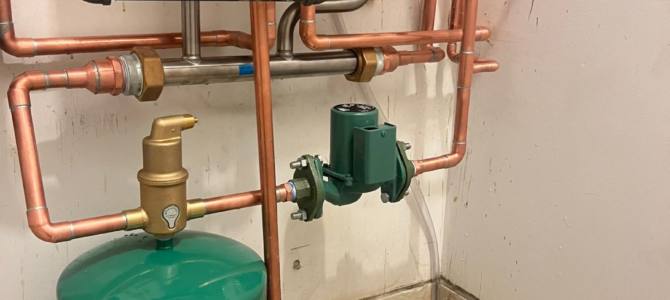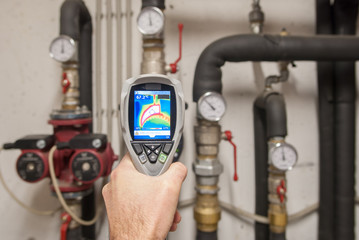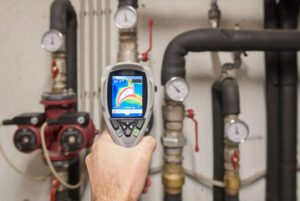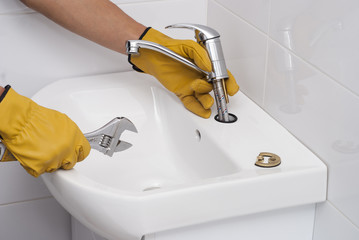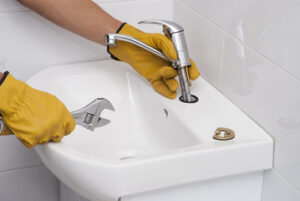If your tankless water heater randomly shuts off, it may need Tankless Water Heater Repair Denver. A plumber can install a new fuse for about $50.
Many problems can cause a cold water sandwich, including sediment and mineral buildup. A plumber will flush your unit as part of routine maintenance to prevent this problem.

During winter, water lines are more susceptible to freezing when the temperature drops. Frozen pipes can burst, leading to extensive water damage. Homeowners can prevent frozen pipes by keeping their homes well-insulated and checking for leaks regularly. They should also keep cabinet doors open in areas with exposed pipes, especially in unheated parts of the house, such as the basement or garage.
You can thaw frozen pipes by applying heat. However, before you do this, it is important to know what you’re doing and understand the risks. Never use a blowtorch, propane or kerosene heaters or anything with an open flame to thaw pipes. This could lead to fires or even a pipe explosion. A space heater, electric heating pad, or hot water can be used to apply heat. It is also important to keep the faucet for the affected pipe open to allow thawed water to drain.
Another way a water heater can malfunction is by having a faulty dip tube. The dip tube is what transfers cool water from the tank to the bottom so it can be reheated. If the dip tube is worn out, it can cause cold water to mix in with hot water. This will lower your water temperature and reduce your shower’s quality.
A plumbing professional will be able to diagnose and repair the problem. They will check the thermostat, circuit breaker and all other wiring to see if the problem is just with the heater’s heating element. If it is, they will replace the heating element and restore hot water to your home. They will also check the exhaust vent to make sure it is open and clear of blockages.
While tankless water heaters have fewer repair issues on average than storage units, they do still experience problems from time to time. One common issue is rust. Rust can occur on your heating elements or copper tubing. When rust occurs, it is important to repair it immediately to prevent the problem from getting worse and potentially causing more damage to the unit.
The cost of repairing rust on your tankless water heater will vary depending on the size and type of rust you are dealing with. For example, if your rust is on the copper tubing, it will be easier to remove and can be cheaper than if the rust is on the heating elements. The first step to repairing rust is to clean the surface you are working on. This can be done by using a variety of sandpaper starting with a 40-grit and moving up to a 80, 120, 180, 400, or 600-grit. It is also recommended that you use acetone or another chemical remover to ensure the area is free from any dirt, glue, or other debris.
If your tankless water heater is making loud rumbling noises, it may have a blockage or other problem. It can be difficult to diagnose the exact problem based on the sound alone, but your plumber will check things like the gas line sizes, thermal expansion tanks, gas sediment traps, and venting. They will also take a look at the unit to see if it needs descaled or to clean the burners.
A tankless water heater with a faulty gas valve can cause a lack of hot water in your home. Your technician will replace the valve, which is an expensive component. It is also recommended that you have your gas flex line replaced on a regular basis as it is a single-use part.
A pressure relief valve is an essential safety feature for your hot water tank. Heated water creates pressure, and if the temperature of the water or the pressure of the system goes over a safe threshold, the pressure relief valve opens to discharge hot water and steam. Without this vital safety mechanism, the tank could explode, leading to significant damage to your home or business.
The valve has a metal lever that snaps back and discharges steam or hot water into a drain tube. It’s important to test your valve regularly to make sure it’s working properly. If your valve is stuck open, or if it is constantly discharging hot water and steam, it may be time to replace the valve.
To do this, shut off the water supply to your water heater. Find the water heater’s discharge tube, usually located on the top of the water tank next to the cold water feed inlet. Place a bucket underneath the tube to catch the water that will drip from the discharge valve. Then, remove the inlet and outlet drain caps from the water heater isolator kit, and open both drain valves to release the pressure inside the tank. When the pressure inside the tank drops to a lower level, close the drain valve and close the inlet valve.
Then, with the power and water supply to your tank turned off, unscrew the valve from its opening using a wrench. Remove the old valve, and then screw in a new one with the same pressure rating as your current valve. Turn on the water supply and test the new valve. If it’s still leaking, you should call a repair service to replace the valve.
The burner assembly is an important part of the tankless water heater system, as it ensures the proper ignition and combustion of gas. If the burner assembly fails, the unit will be unable to heat up water on demand. This issue can be caused by a number of factors, including clogs, corrosion, and sediment. To troubleshoot this problem, it is essential to make sure that the gas supply is on and that the pressure is within specs. Also, ensure that the gas line is purged after installation.
The burning and combustion of fuel in the burner head of a tankless water heater is controlled by an igniter or flame sensor. If these components malfunction, the water heater will not turn on or may emit a smell of gas. It is possible to replace these parts, but it is best to leave this task to a professional.
Another common issue is a failure to ignite the pilot light. This can be solved by relighting the pilot or by adjusting the thermostat. If the unit still fails to ignite, it may be time to replace the pilot or the thermocouple. The cost of this repair varies depending on the water heater brand and model.
If you are experiencing these issues, it is important to call a qualified tankless water heater repair technician right away. They can fix the problem and restore hot water service to your home. In the meantime, you can try resetting the unit by ensuring that it is properly plugged in and that the circuit breaker or power switch is on. This will help prevent further damage to the unit and ensure that it is safe for use.
The air filter helps to keep bugs, dirt, and debris out of the unit. It needs to be cleaned or replaced regularly to keep it working properly. This task can be done by a homeowner, though it’s best to let a professional do it. This will ensure it is completed correctly and safely.
Another reason to schedule regular maintenance for your tankless water heater is to check the heat exchanger. A dirty heat exchanger can lead to leaking, rust, and other problems. It’s best to have a professional clean and inspect it on an annual basis to prevent these issues.
Sometimes, you’ll notice that you have cold water sandwiches while showering. This happens because someone else may have showered before you and used up all of the hot water in the tankless system.
When this occurs, the heat exchanger is trying to reheat your water but doesn’t have enough gas to do it. The result is that you get the dreaded cold water sandwich.
To prevent this from happening, make sure you switch the thermostat to “vacation” mode when you leave for long periods of time. This will prevent the heater from overworking and using up your gas. Also, you should have your professional drain and clean the water heater on an annual basis. This will remove any accumulated sediment and reduce the chance of damage or leaks. If you have a gas-powered unit, your technician will also inspect and adjust the gas pressure for optimal performance. This is also a good time to have your venting system checked for any obstructions or blockages that could be dangerous to you and your family. This is an important part of the maintenance process for all tankless water heaters, regardless of the type you have.
